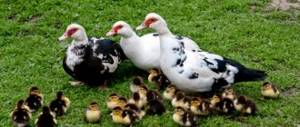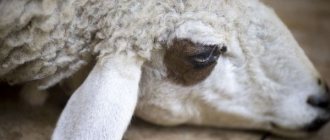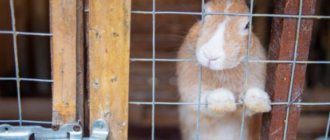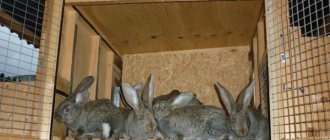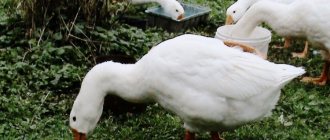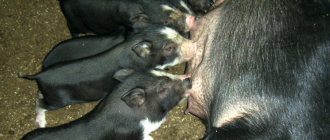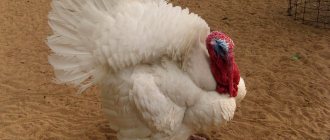Releasing birds on the street is neither safe nor profitable, and not every farmer is able to provide a huge fenced area for birds. The best option is to place your winged farm in separate miniature enclosures in groups, this will make it easy to monitor progress, collect eggs, change water, give food and perform other maintenance tasks.
It’s easy to make life easier for yourself and your birds: just make cages for laying hens with your own hands. All steps, calculations, drawings and recommendations will be given in detail below.
How to make a parrot cage with your own hands
It is not difficult to make a rectangular medium or large cage for a parrot with your own hands.
The work must be carried out according to the following plan:
- calculate the size of the cell;
- develop a project and draw a diagram indicating all parts of the structure and their dimensions;
- prepare a set of tools and buy the necessary materials;
- assemble a parrot cage;
- arrange a new home.
It is important not to skip a single step in order to make a comfortable and safe house for the bird.
Dimensions and drawing
The minimum dimensions of a cage for one parrot are 45x30x35 cm. When kept in groups, the housing parameters are increased by a multiple of the number of birds.
As an example, we can take the following cell diagram:
Homemade rectangular cages are easy to assemble. They consist of lattice walls, a ceiling and a floor made of wood, and a tray makes cleaning easier.
Materials and tools
To build a cage for a cockatiel parrot with your own hands, you need to prepare the following set of tools:
- pliers;
- drill-driver;
- roulette;
- emery cloth;
- self-tapping screws;
- furniture handles.
To easily make a parrot cage at home, you need to purchase the following materials:
- stainless steel mesh with cells 10x25 mm and large thickness - 2 or 3 mm;
- sheets of plywood about 1 cm or fiberboard (1–1.5 cm).
This set is enough to create a comfortable and spacious cage.
Preparation method
It is enough to assemble metal walls, a ceiling, as well as a floor, sides and a wooden pallet.
Step-by-step instructions for creating a cage:
1. First, the size of the home is determined taking into account the number of parrots and their breed. A diagram should be drawn on the sheet indicating the parameters of the parts and the placement of doors and accessories. You also need to calculate the groove size for the part of the floor that moves.
2.The back and side walls are cut out according to the diagram. The mesh must be cut so that the cut ends are even. To subsequently connect the walls and ceiling, protruding rods are left at the joints in increments of about 10 cm.
3.Next, the front wall is cut out of the mesh; it is shorter than the back and side walls (the size of the slot for the pallet is taken into account). Also on this part there are no tips for connecting to the floor.
4. The side wall part is pressed against a sheet of plywood so that the rods extend 1 cm beyond the edge. Markings are made on the base (in the photo). At the designated points you need to drill through holes of approximately the same thickness as the rods. The same actions are carried out on the second side and rear sides of the plywood base.
5.The ends of the rods are inserted into the holes so that their ends come out from the bottom of the plywood. If necessary, the ends are hammered in until they stop, and the protruding wires are bent. So you need to install 3 walls: 2 side and 1 back.
6. Parts for the sides are cut out of plywood, which are 5–7 cm wide. Their edges are sanded with sandpaper, then the parts are installed on the base and secured with self-tapping screws.
7.The walls are fastened together and the ends of the wire are twisted.
8.Next, cut out a part for the pallet; slats are fixed around its circumference, the height of which is 2 cm - these are the sides. It is better to make the front side higher and screw a furniture handle to it. A narrow element is cut out of a sheet of plywood, which will be placed on the front of the structure. It should be wide enough for the tray to move easily and overlap the front of the sliding bottom. The side is fixed to the transverse cuts of the side parts. It needs to be aligned with the top edge. The pallet is inserted into the gap formed by the side.
9.The front wall is fixed to the frame. A hole for the door is cut out on it. The protruding ends of the wire are unbent and, if necessary, processed with a file. A door is made from mesh with homemade hinges, its size is slightly larger than the hole. The door is fixed to the structure with wire.
10. A locking mechanism is made of mesh for the door.
11. A ceiling is cut out of the mesh and connected to all the walls.
To prevent garbage from falling out of the cage into the room, you need to install a side around its entire circumference. It is made of transparent plastic. The side is fixed to the housing using a wire that is pulled through the holes in the plastic.
Arrangement of the cage
An assembled parrot cage is a box that needs to be properly filled with the necessary accessories. Feeders, drinking bowls, perches, swings and a bathtub not only decorate the interior, but also perform specific functions.
It is recommended to install perches made of deciduous trees (except poplar and aspen) in the cage. Coniferous plants are not suitable for this, as they can injure the pet. This can be a purchased product or made independently. It is fixed on the walls or ceiling.
In the parrot's house you need to install feeders and a drinking bowl. It is recommended to attach these devices to the mesh using wire fastenings.
Interesting! The parrot's drinking bowl is located outside the cage. The bird only has access to the water stand.
A swing, a ladder, as well as various toys (colorful circles, ropes and bells) will help complement the interior of the cage and improve the parrot’s leisure time. These accessories can be made with your own hands or purchased.
So that the parrot can freshen up, you need to put a bath in the cage. It is better to buy swimsuits made of transparent plastic with a rough bottom.
How to make an aviary for a parrot with your own hands
Aviaries for parrots are more comfortable (especially for large birds or families) than cages, since they can make short flights. They are available indoors and outdoors. The latter, larger than the former, have a roof for protection from the sun and precipitation. All-season designs are the most improved.
An aviary for parrots is made of stainless steel mesh or welded fabric. The latter material is easier to fix on a frame made of wood or metal. If an individual mesh link is damaged, the strength of the rest does not suffer.
To make an aviary for parrots that will stand in an apartment, you need to prepare the following set of tools and materials:
- drill with drill bit;
- stapler;
- mallet;
- wire cutters;
- saw;
- screwdriver;
- emery cloth;
- level;
- roulette;
- net;
- bars;
- steel corners;
- curtains;
- door bolts;
- fastening materials.
An aviary for parrots is built according to the following plan:
1. The beams of the required size for the frame are cut out. They are sanded with sandpaper and then connected with self-tapping screws. The corners are fixed to the joints.
2. The mesh is fixed to the frame from the inside with a stapler.
3. PVC panels are used to make the back wall.
4.To make doors, a hole of the required size is cut out of the mesh wall, and the edges are sanded with a file. The bars are used to make a frame onto which the door hinges are fixed. A mesh and curtains are attached to the inside of the opening and connected to the hinges. The locking mechanism is installed on the outside to prevent the parrot from opening the door.
5. It is better to buy a ready-made pallet made of plastic or metal. If it is not deep, then you need to make high sides for it. To make it easier to get it out, a handle is attached to the front part, and a wheel is attached to the bottom surface.
The ceiling for the structure is made flat or domed (at the discretion of the owner).
After completing the assembly, the parrot aviary needs to be properly equipped. The set of accessories in this case does not differ from the set when arranging the cage: containers for food, water, perches and toys.
